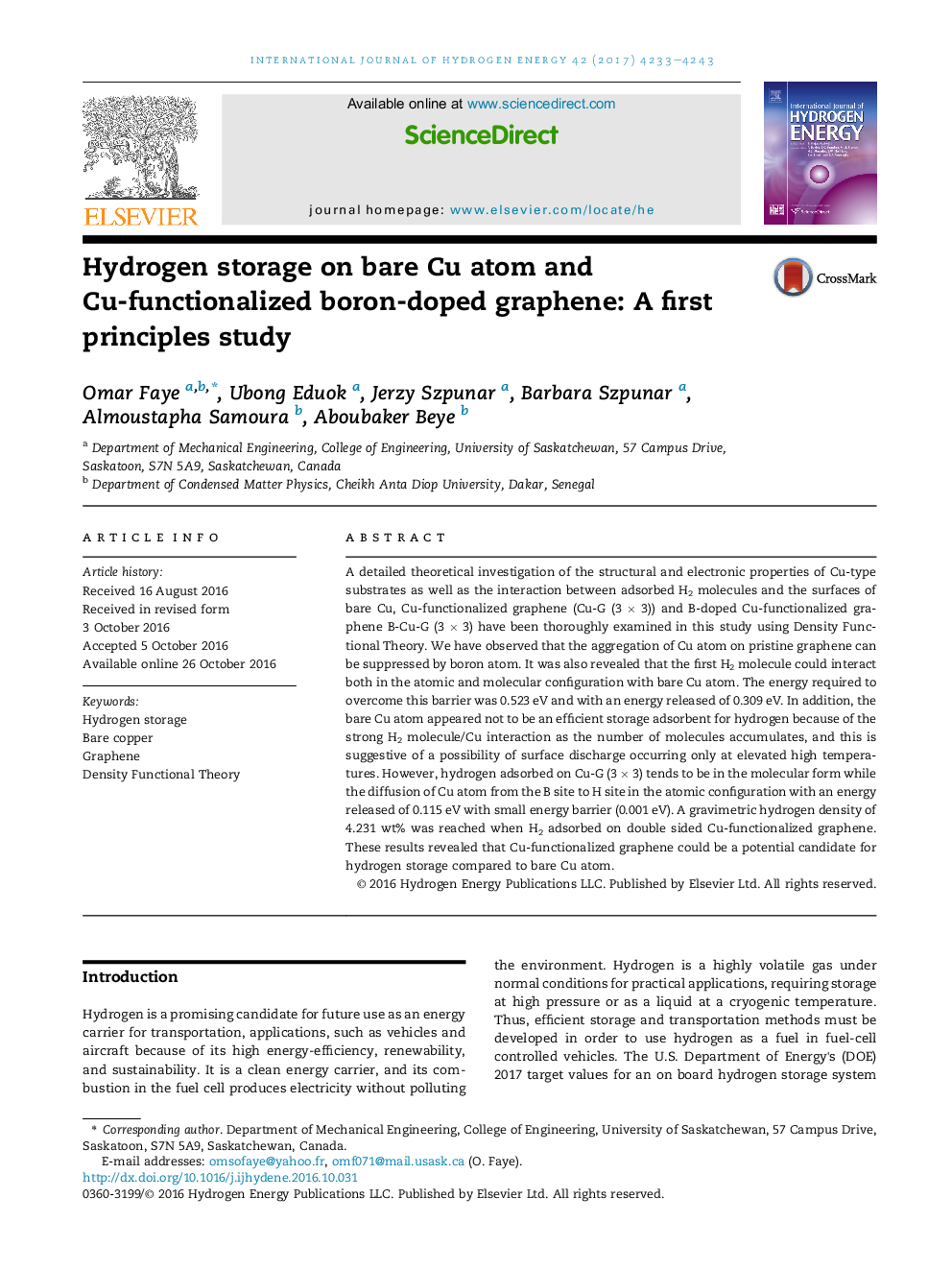| Article ID | Journal | Published Year | Pages | File Type |
|---|---|---|---|---|
| 5146342 | International Journal of Hydrogen Energy | 2017 | 11 Pages |
â¢H2 adsorption on bare Cu atom, Cu-functionalized graphene and B-doped Cu-functionalized graphene were studied.â¢We predicted that, the clustering of Cu atom on pristine graphene can be suppressed by the boron atom.â¢The first H2 molecule could interact both in the atomic and molecular configuration with bare Cu atom.â¢We also showed that, the bare Cu atom is not a good candidate for hydrogen storage.â¢A gravimetric hydrogen density of 4.231 wt% was reached when H2 adsorbed on double sided Cu-functionalized graphene.
A detailed theoretical investigation of the structural and electronic properties of Cu-type substrates as well as the interaction between adsorbed H2 molecules and the surfaces of bare Cu, Cu-functionalized graphene (Cu-G (3Â ÃÂ 3)) and B-doped Cu-functionalized graphene B-Cu-G (3Â ÃÂ 3)Â have been thoroughly examined in this study using Density Functional Theory. We have observed that the aggregation of Cu atom on pristine graphene can be suppressed by boron atom. It was also revealed that the first H2 molecule could interact both in the atomic and molecular configuration with bare Cu atom. The energy required to overcome this barrier was 0.523Â eV and with an energy released of 0.309Â eV. In addition, the bare Cu atom appeared not to be an efficient storage adsorbent for hydrogen because of the strong H2 molecule/Cu interaction as the number of molecules accumulates, and this is suggestive of a possibility of surface discharge occurring only at elevated high temperatures. However, hydrogen adsorbed on Cu-G (3Â ÃÂ 3) tends to be in the molecular form while the diffusion of Cu atom from the B site to H site in the atomic configuration with an energy released of 0.115Â eV with small energy barrier (0.001Â eV). A gravimetric hydrogen density of 4.231Â wt% was reached when H2 adsorbed on double sided Cu-functionalized graphene. These results revealed that Cu-functionalized graphene could be a potential candidate for hydrogen storage compared to bare Cu atom.
Graphical abstractDownload high-res image (216KB)Download full-size image
